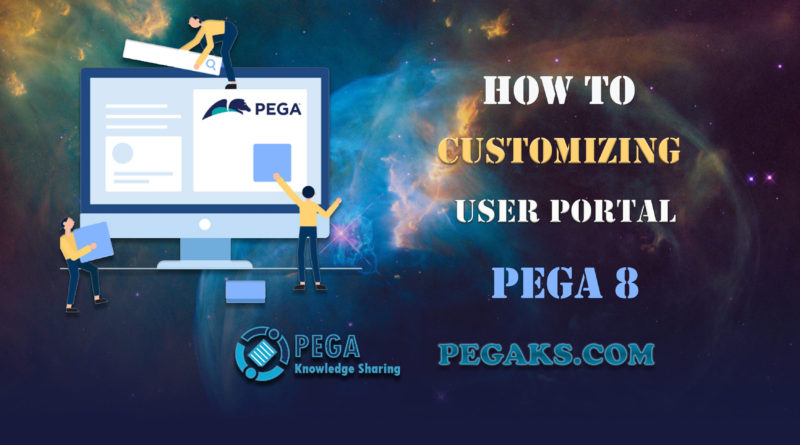In this post you will learn How To Customizing A user Portal in Pega 8.
User portals provide application users with the tools and options needed to work with a Pega application.
Each portal is tailored to a specific user role.
The purpose of a user portal is to provide users with a view into their application.
User Portals:
- A user portal is the application user’s view into the application.
- Pega provides several default user portals, such as case workers and case managers.
- Each portal is customized to the needs of a specific type of user.

Harnesses:
- Pega provides different types of UI records for content, structure, and formatting.
- Harness records describe the structure of the UI.
- Pega applications commonly use four standard harnesses to organize the content of user forms.
- New: It supports the creation of new cases.
- Perform: It enables users to select a flow action to perform to complete an assignment.
- Review: It presents an assignment in read-only mode, preventing data entry.
- Confirm: Presents a read-only confirmation of completion of an assignment if the next assignment is not performed by the user.
- An action area in the harness displays the content of a user form when users select a flow action. The action area describes the work users perform to complete an assignment.
- Harenesses that organize a user portal contain a screen layout.
Screen Layout:
- It organizes the elements of the browser window into a main content page and smaller surrounding panes.

- Each pane of the screen layout references a section that contain the content displayed in the pane.
Customizing User Portal:
- In Pega, a portal is represented with a portal rule.
- Portal records are listed in the user Interface category in both the Records Explorer and the Create menu.
Note: Portal records are classless and do not appear in the App Explorer.

User Role:
In Pega, you can configure a portal for use by either users or developers.
- User – User portals are intended for users who do not routinely need to update rules.
- Developer – Developer portals are intended for system architects and business architects, who routinely update rules.
Portal Types:
Pega supports two portal types.
- Composite: These are defined by harnesses and sections, and these are cross-browser compatible and support IE, Mozilla, Safari, and Chrome.
- Custom: These are defined by an activity.
Note: As a best practice, configure a new portal as a composite portal.
Organize Portal Layout:
- The default user portals are organized with a header, a left navigation pane, and a content pane.
- To change the layout of the portal, you change the screen layout used in the harness.

Portal Branding:
- You can customize the appearance of a portal by applying a skin.
- Skin contain formatting elements of the user interface, such as text size, font style, and background color.
- When you select the application skin, Pega applies the skin for the active application to the portal.
- To apply a skin to the portal, rather than reusing the application skin, select the Other skin option on the Details tab of the portal record, then enter or select the skin to apply.
Portal Menus:
- You can add a menu to a portal by using a navigation record.
- Navigation records are used to organize the menus displayed in standard portals such as the Case Manager and Case Worker portals.
- A navigation record contains a list of menu items. For each menu item, you associate a click event and resulting action, such as logging off or displaying a harness.
Replace the Pega Logo:
- To add an Image or another non-text file to a pega application, Pega creates a binary file record.
- A binary file record acts as a wrapper for the file, providing the security, inheritance, versioning, and deployment benefits of rule resolution.
In App Studio, go to Settings > Theme, and upload a new logo. This instructs Pega to create a binary file to store your image.

Customize Dashboard content:
- You can customize the content displayed on the dashboard of the Case Manager portal.
- Configure the Case Manager portal to display one or more dashboard widgets that provide insight into the status and progress of open cases.
- Dashboard widgets are organized into two or more slots using a dashboard template.

Hope you learned How To Customizing A user Portal in Pega 8.





